South Bank: post-industrial English ghost town
A place defined by decline and depopulation — yet liveable and accessible
When I moved from London to the North East of England four years ago it was not originally for my own sake, as I was protecting someone vulnerable from the madness of the Covid era. As an unplanned benefit, relocation has provided me with a deeper understanding of my own country.
The last of the WW2 bomb sites in London were cleared up by the time I was a child, the industrial areas regenerated in the 1980s and 1990s, and heavy infrastructure investment has continued, notably in public transport. Meanwhile, the north continues to rely more on agriculture and manufacturing, not manipulating symbols in banks and law courts. My southern assumptions don’t apply.
I took an evening walk along the south bank of the River Tees a week ago from Middlesbrough, along the old riverside warehouses and factories. It brought me back to a place I briefly stayed at when I first arrived and was bouncing between Airbnbs and hotels.
The area was famous for its steelworks, now gone, which fed into an active shipbuilding industry. There are still large chemical works on the other shore.
My initial attempt to get to South Bank was blocked by a dilapidated footbridge, requiring a large detour on foot.
I briefly chatted with the grandson of this business’s owner, as he cycled on the street outside, curious why I was photographing it
My destination was here — it looks like a field, but it used to be housing
Derelict areas around London get snapped up and built upon in an instant.
Once the labouring class jobs went after the 1980s financialisation and globalisation era, the lack of demand for housing here resulted in the demolition of many whole streets.
There is nothing like this in southern England. Anywhere.
The story of the last 100 years has been urban expansion. While such decay is more common in parts of America, it is the exception on a more crowded island.
What remains is still a small village-cum-town.
Abandoned shopping carts are like a totem of poverty.
A country’s riches are in its people… no people, no riches.
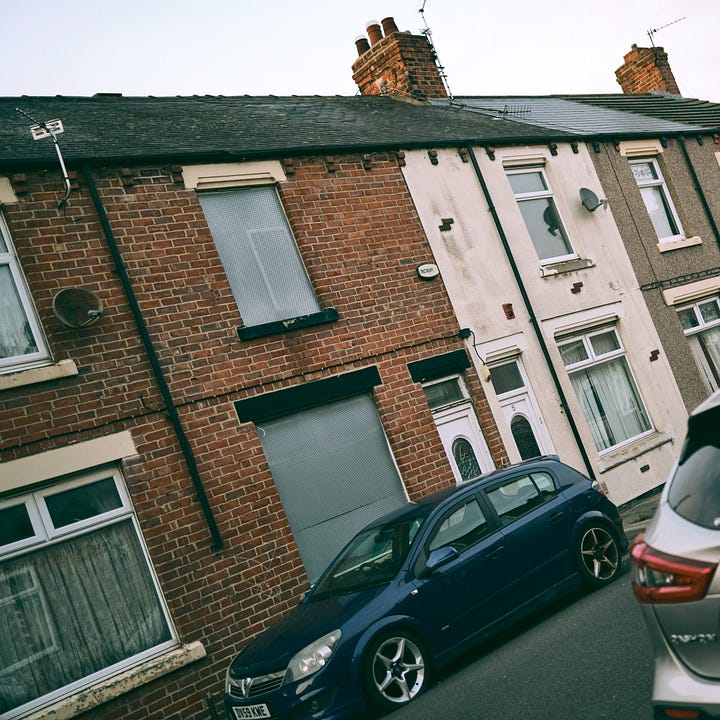
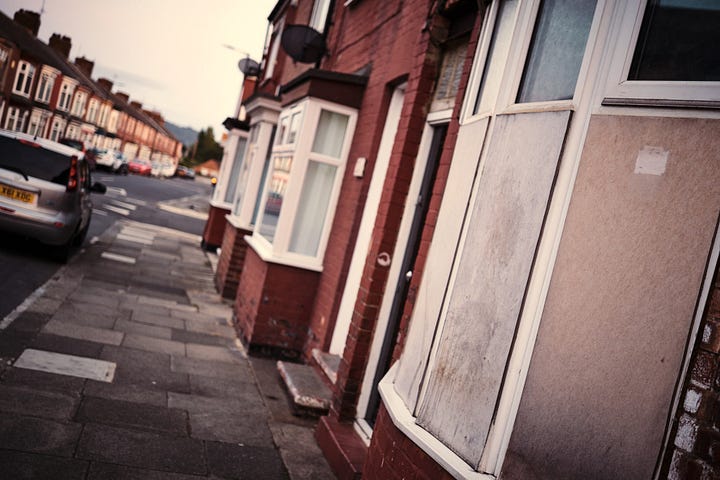
The “non-streets” are eerie.
It’s not like it is a terrible place. It is a little bit cut-off from the river, but there are hills and seaside not too far away. There is the A66 trunk road beside it, as well as a train station (if falling into disrepair). South Bank isn’t bad, just sad.
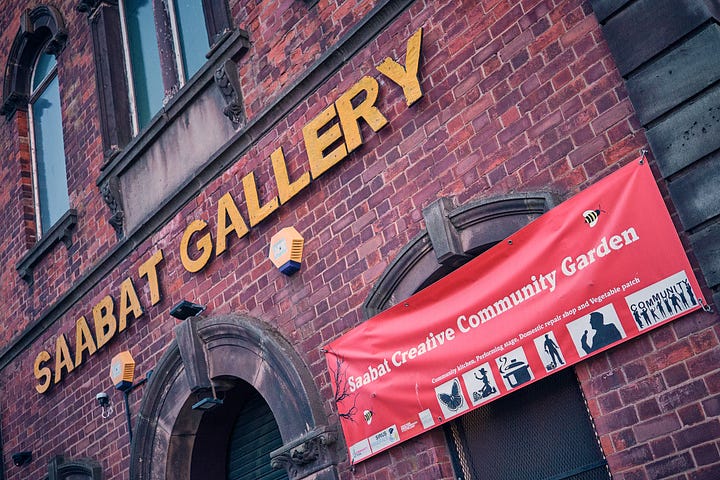
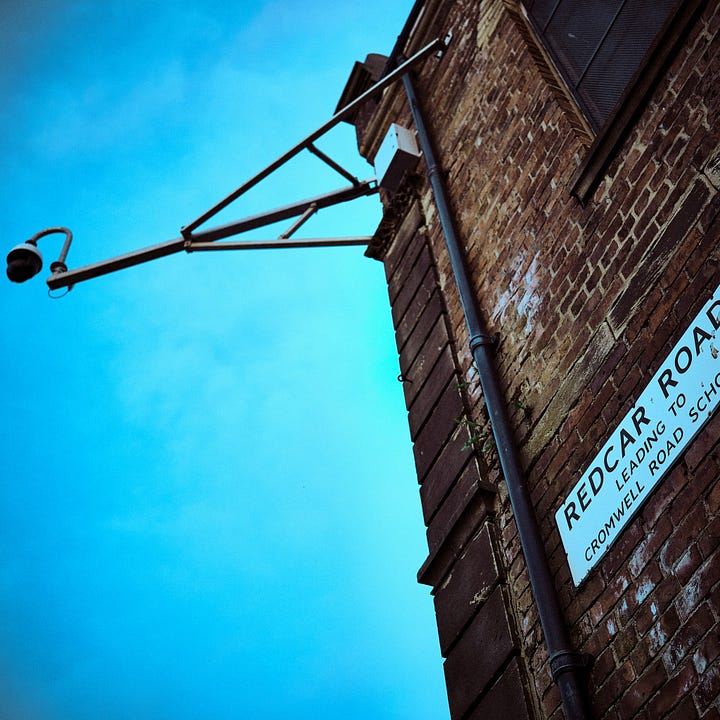
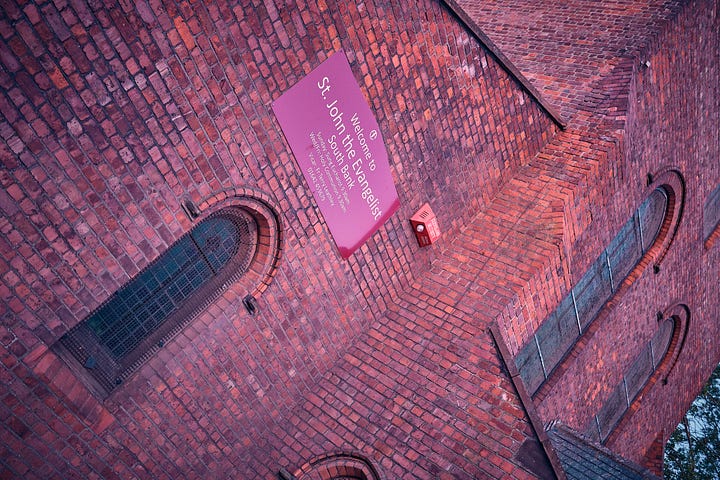
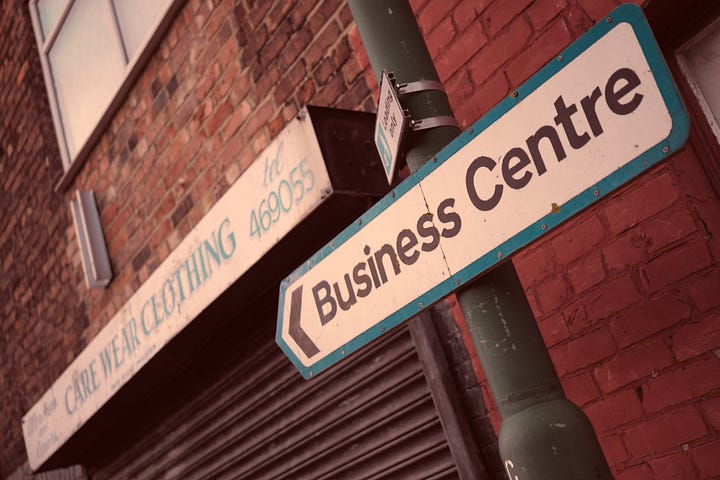
People without cell phones and CAD architecture software built stylish brick buildings. What went wrong?
I hope you “enjoyed” our virtual visit to a part of England that no tourist ever sees. As it shares a name with London’s premier arts area, you cannot even look it up easily — search for “south bank teeside” and you will read of houses that went for £100 in the past.
The visceral poverty upsets me; this isn’t how things are meant to be here.
.😢


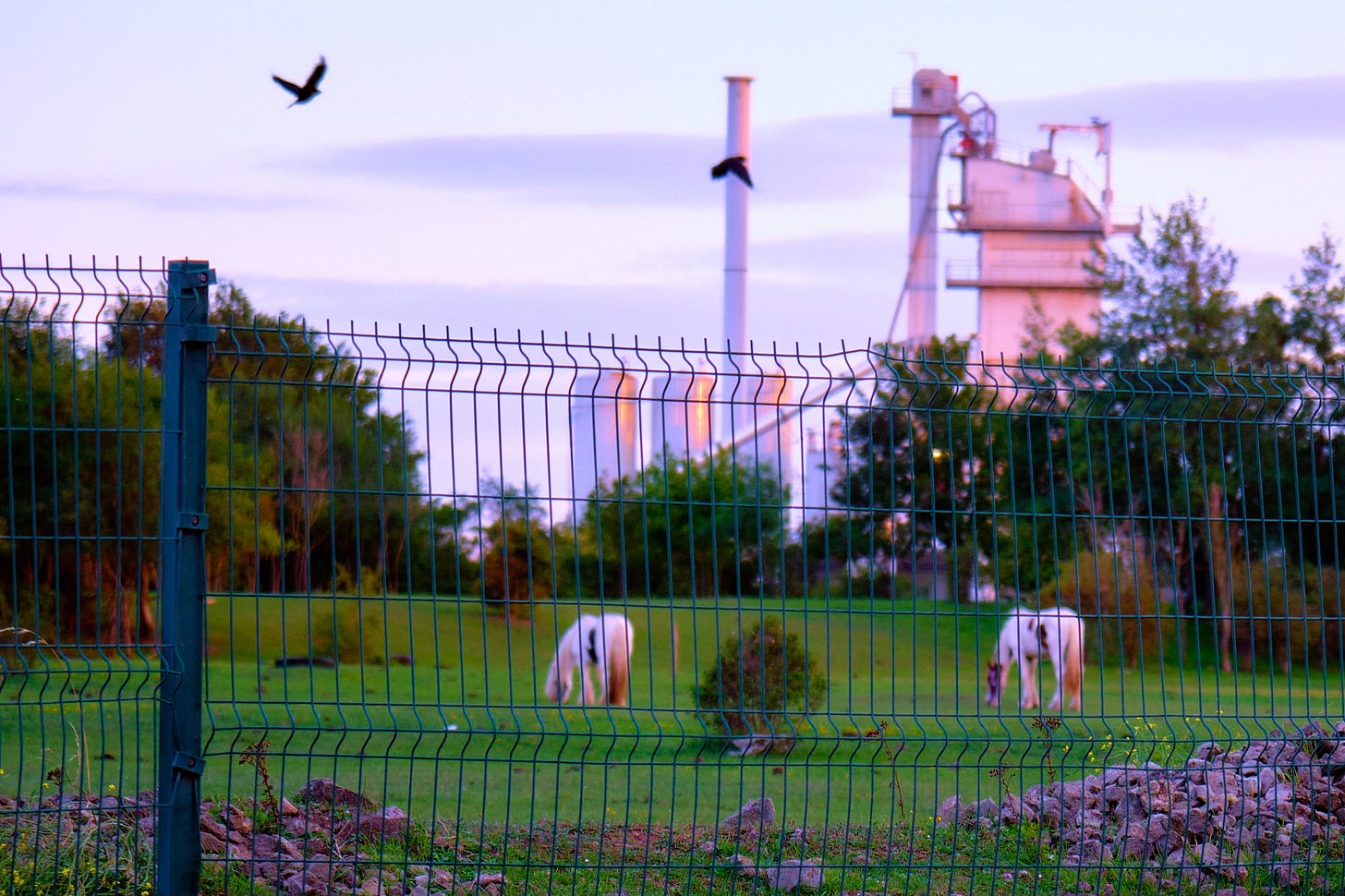
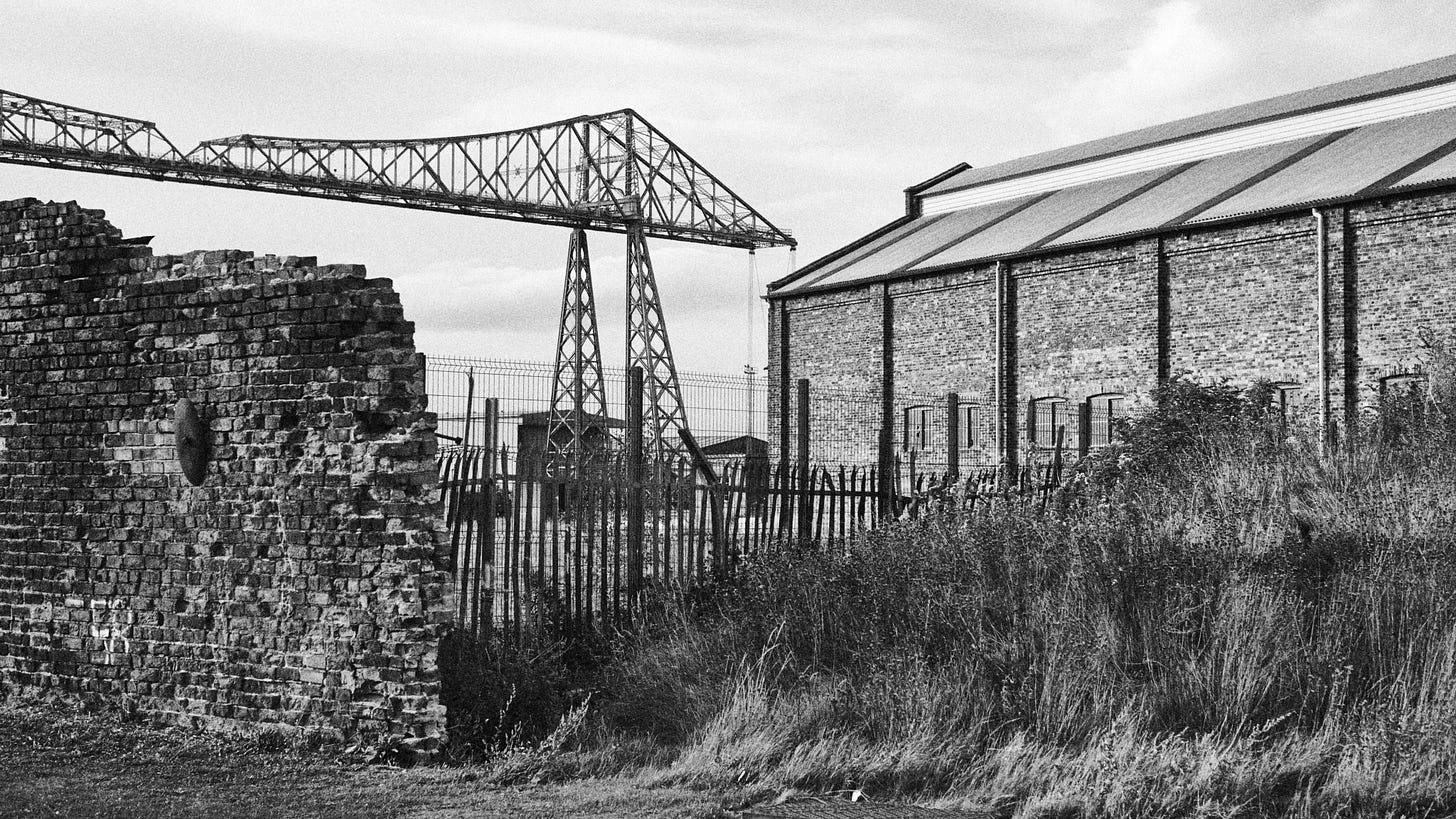
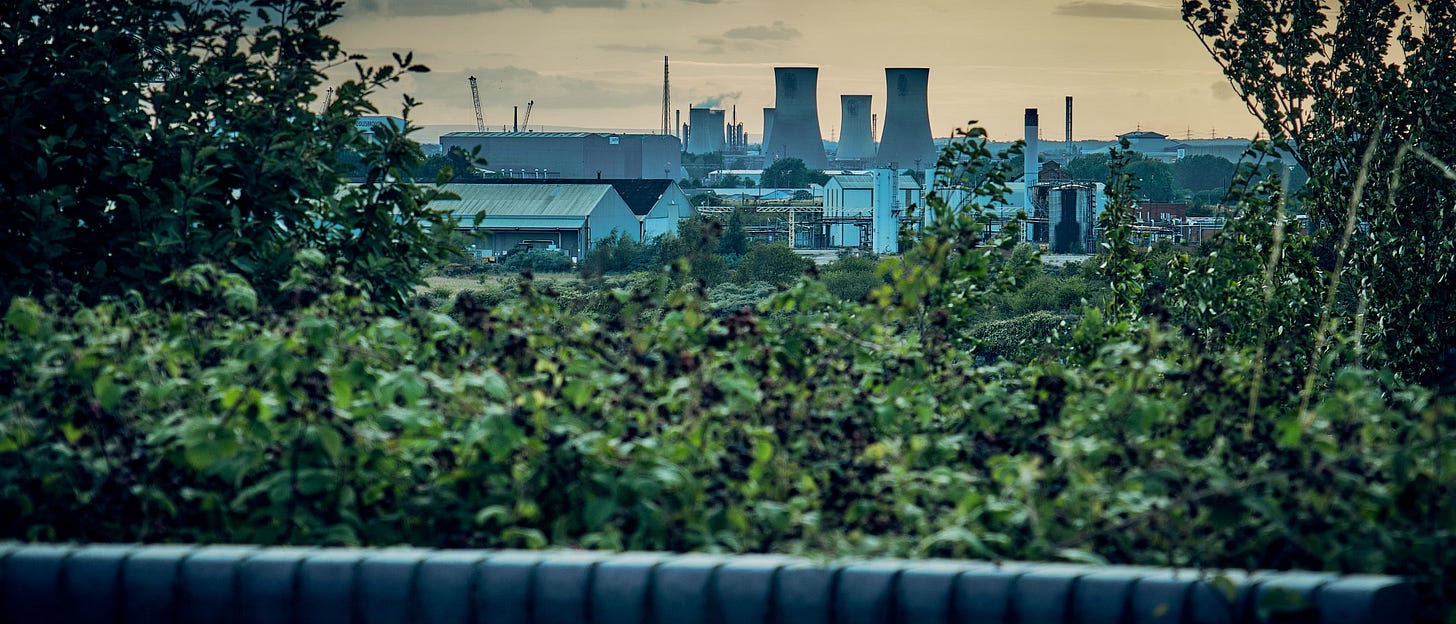
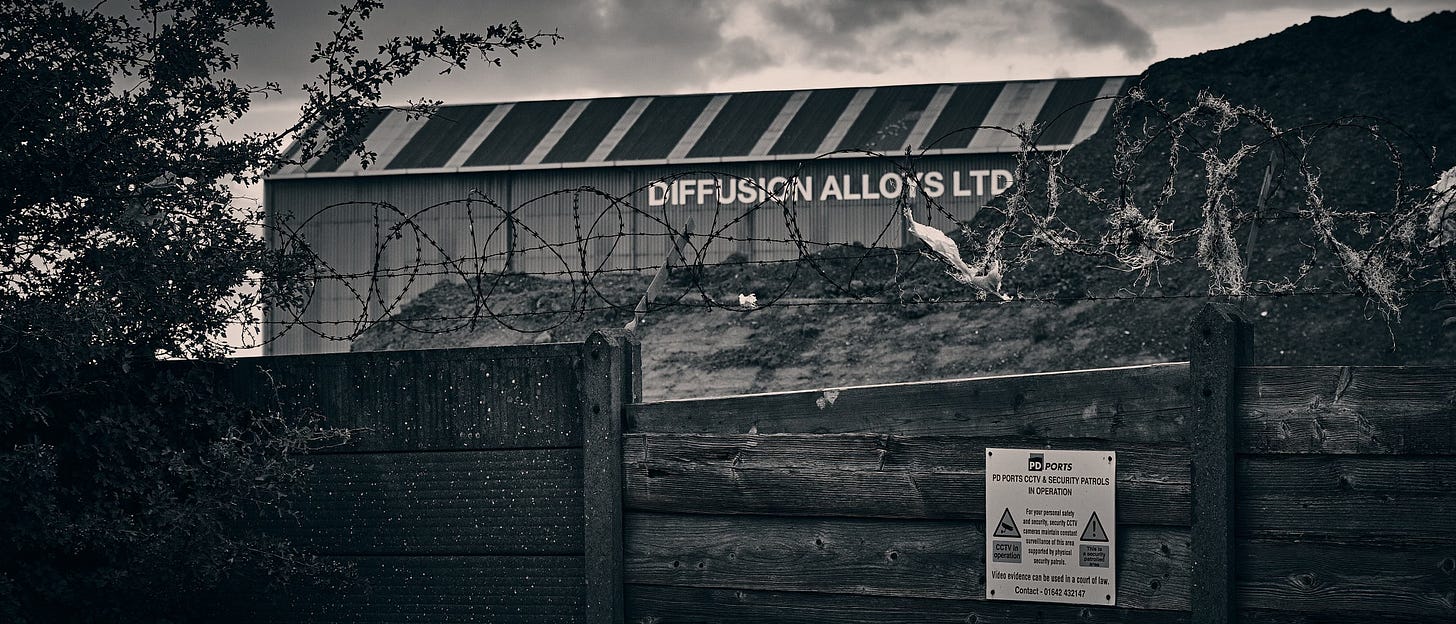
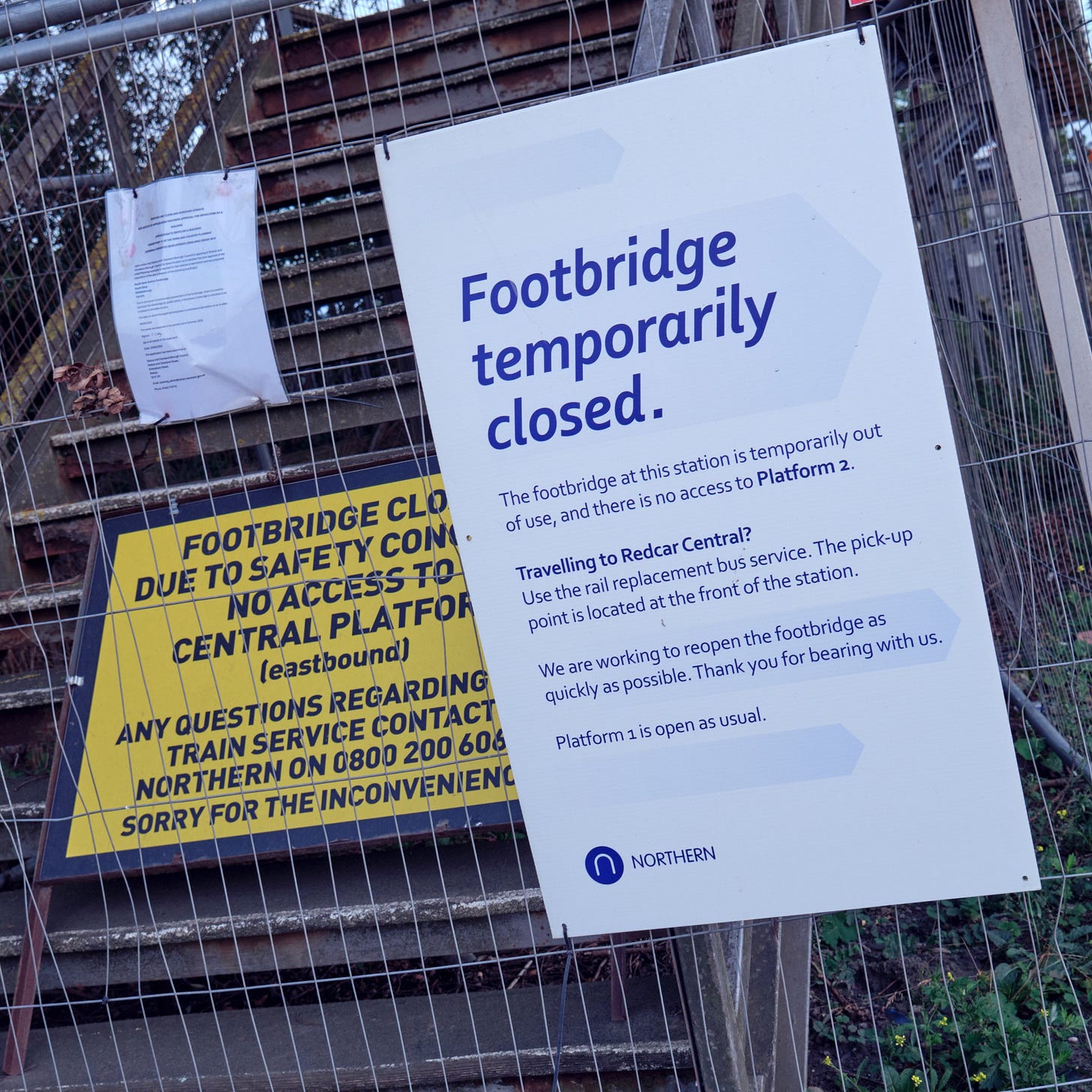
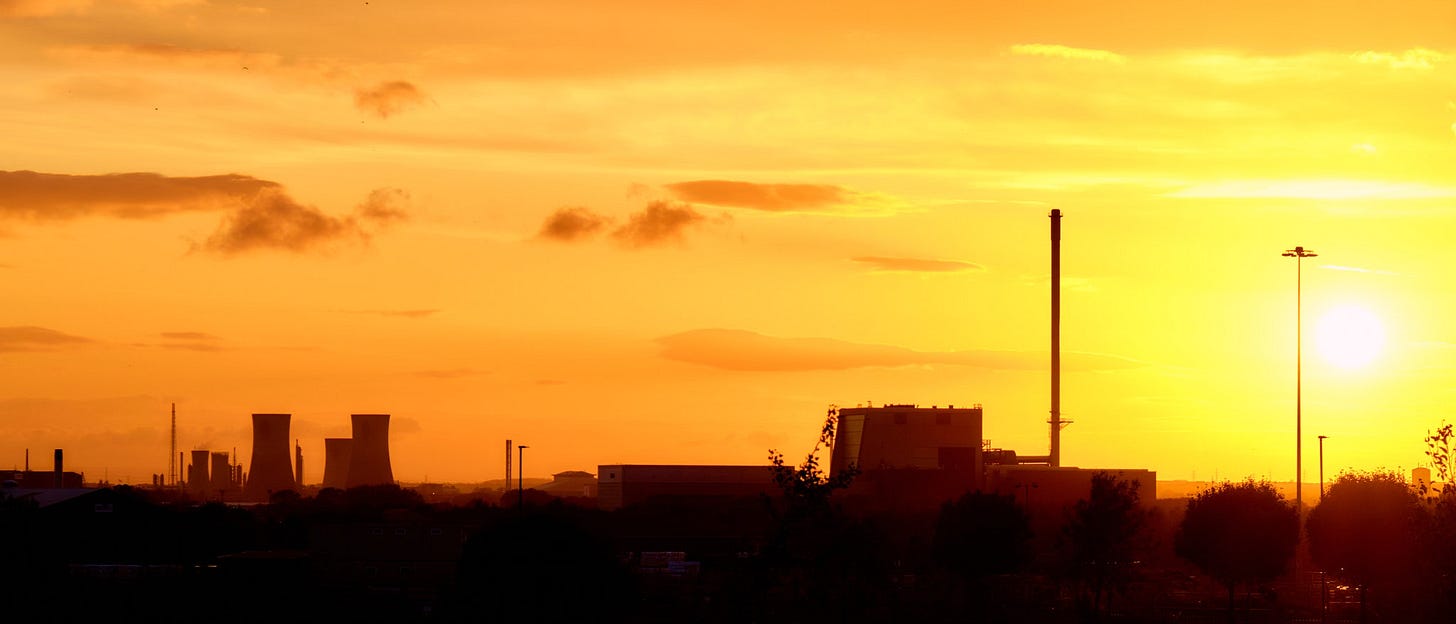
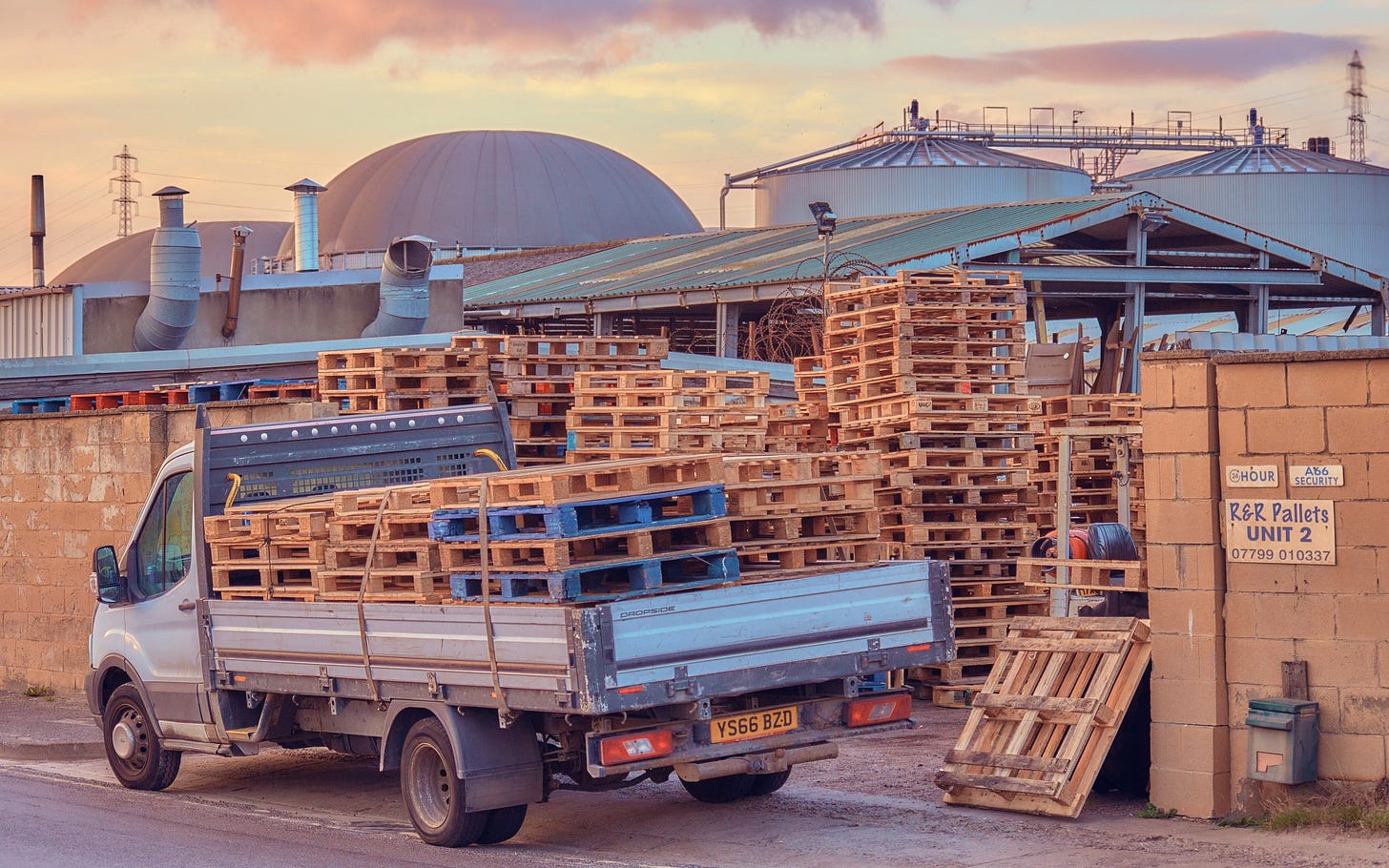
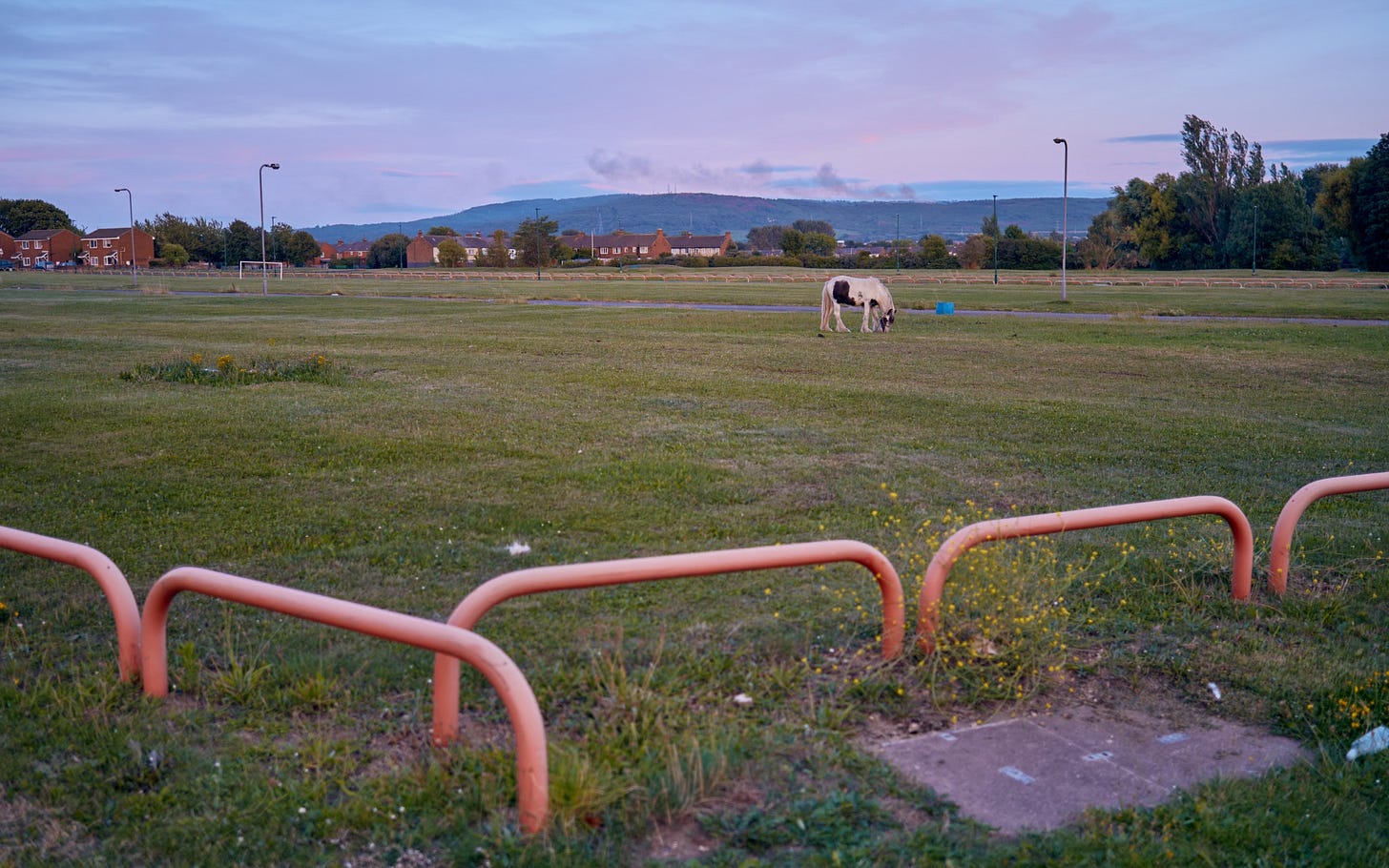
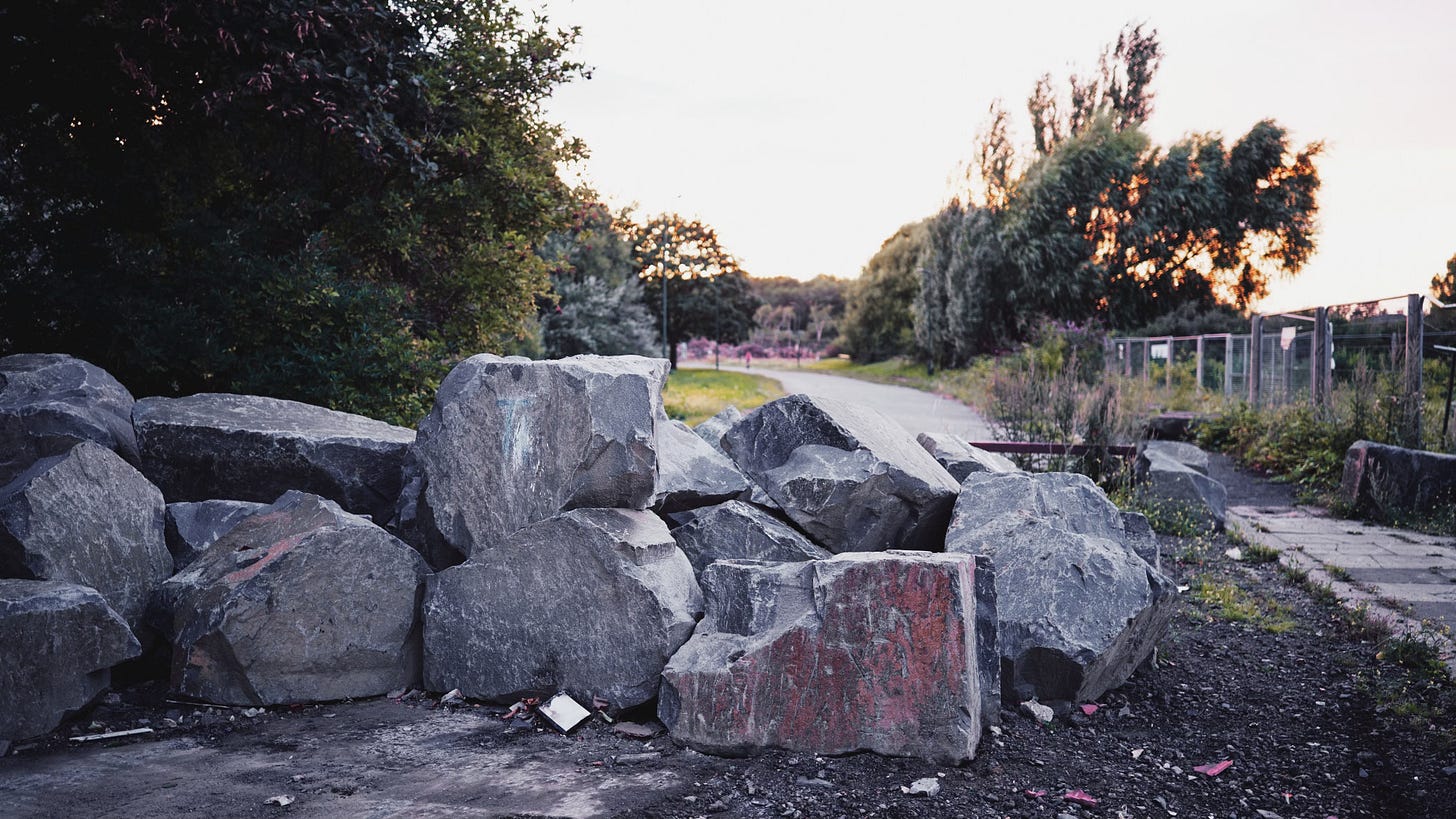
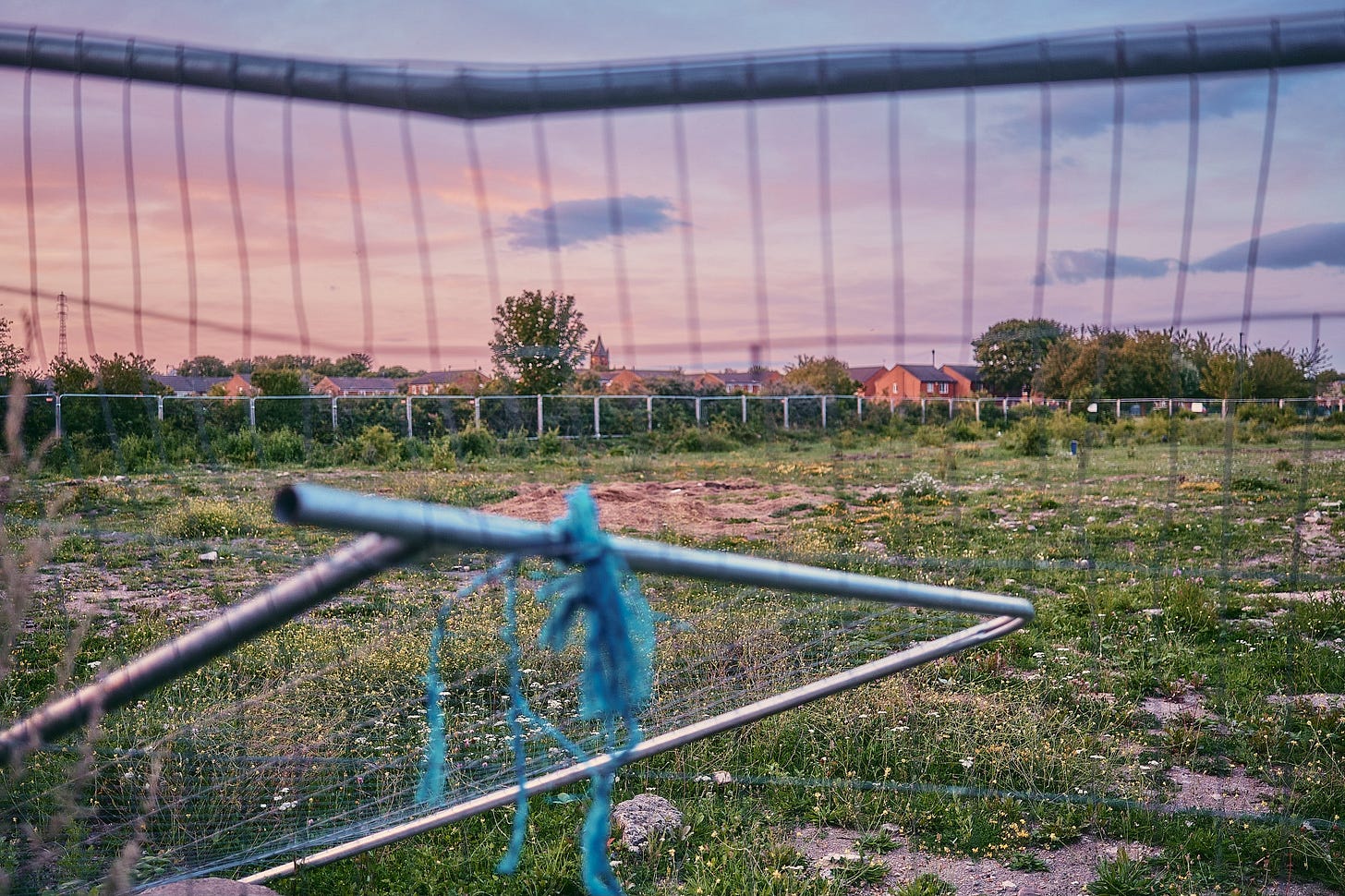
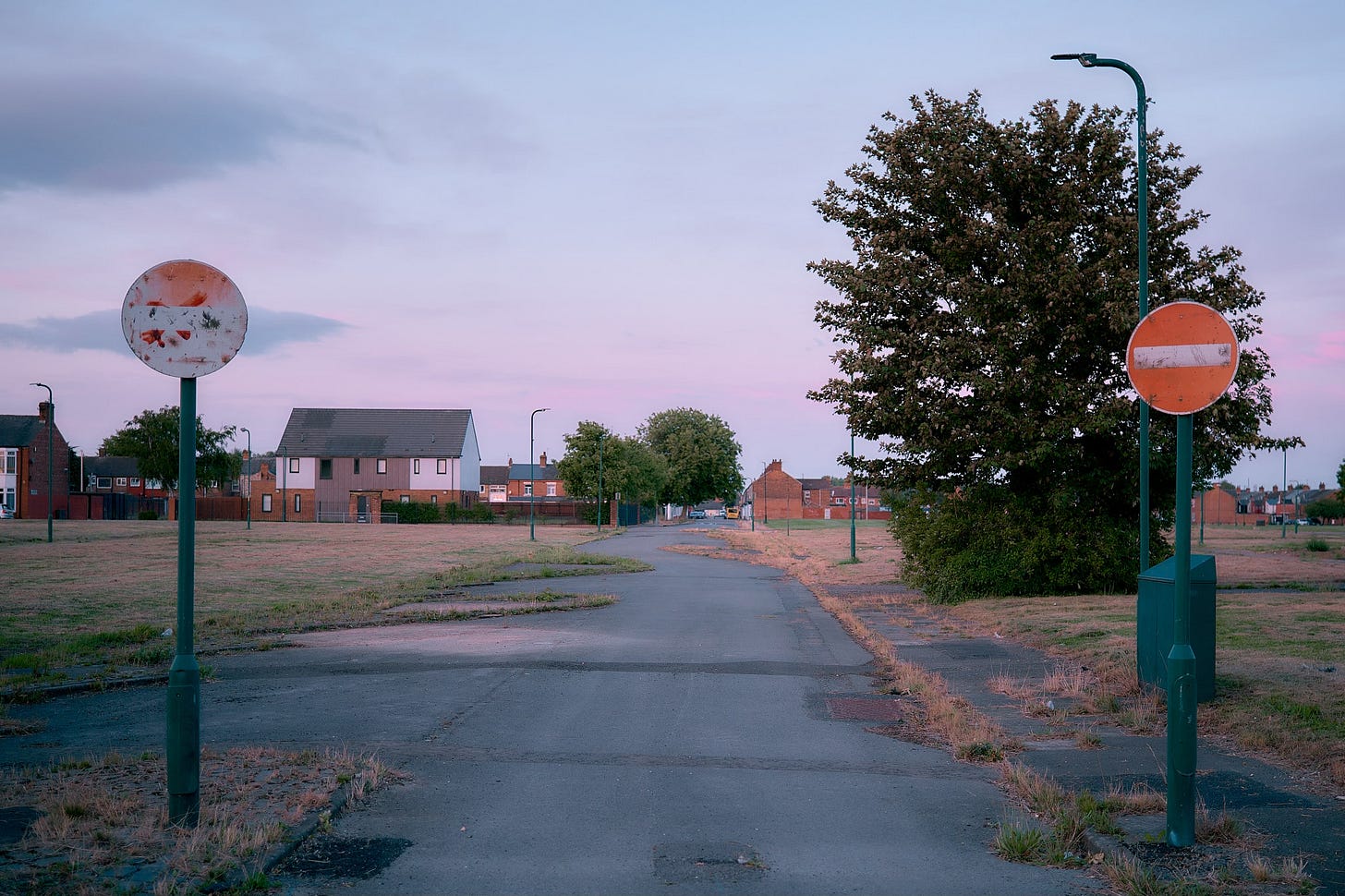
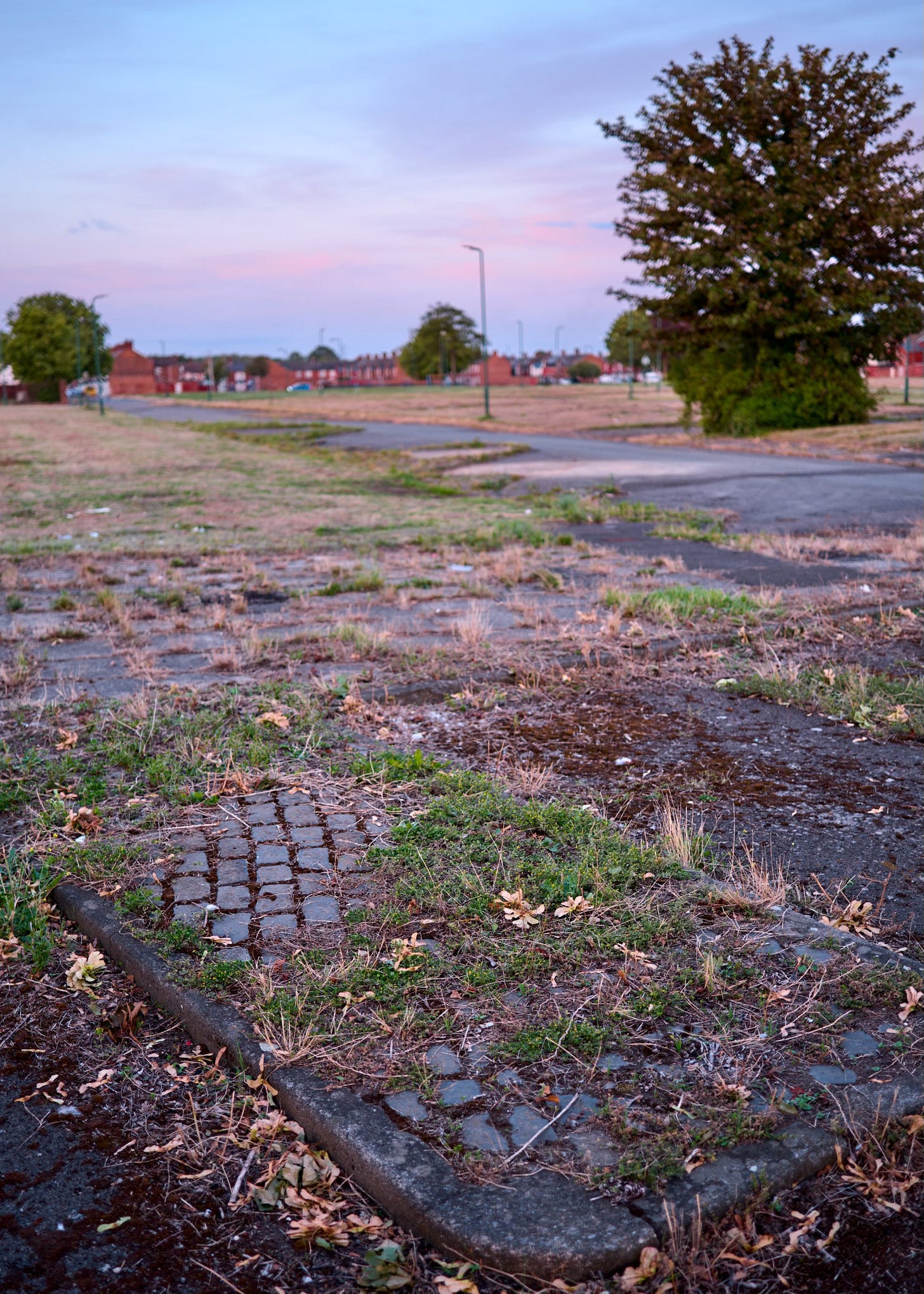
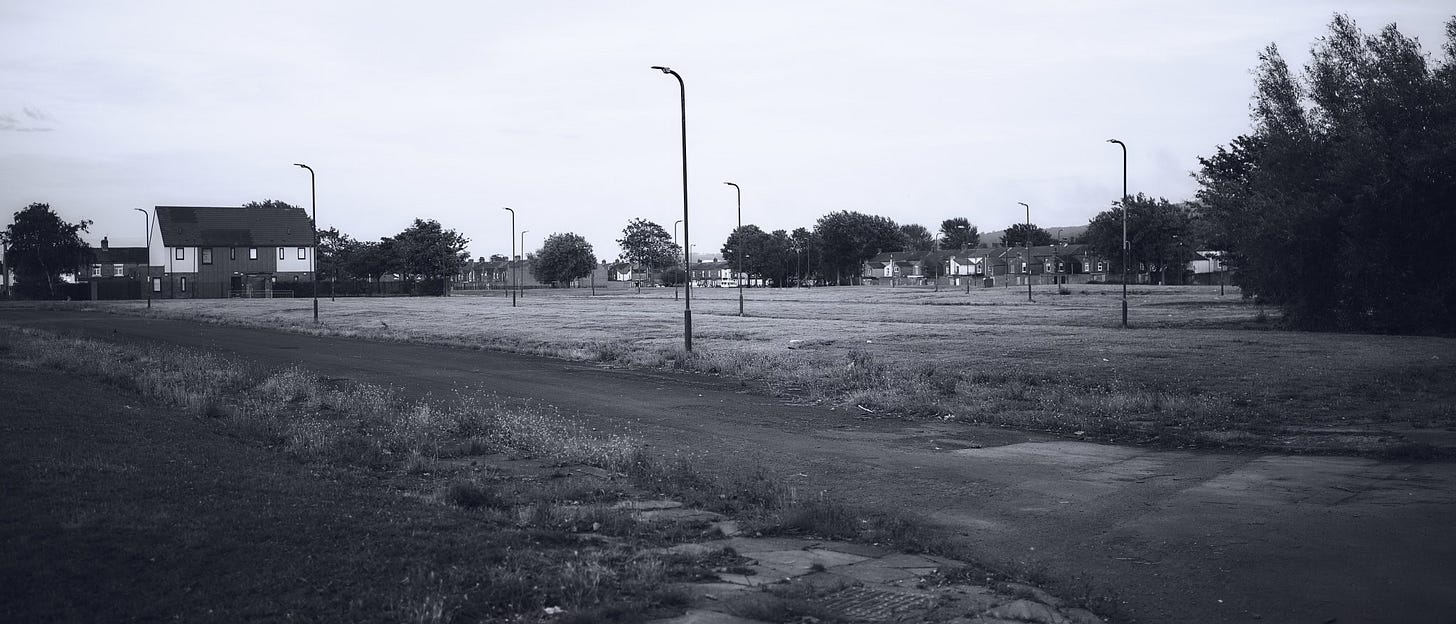
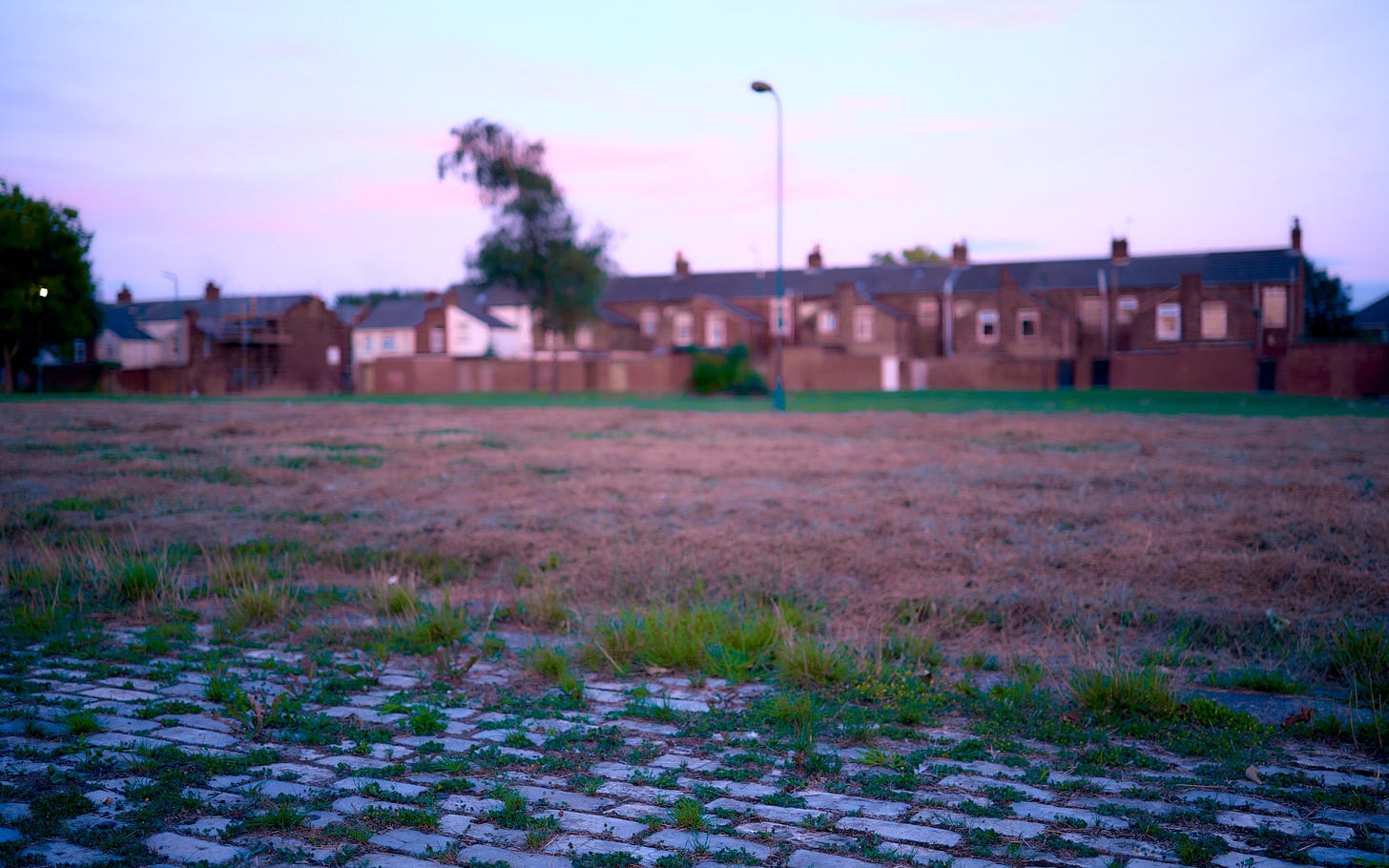
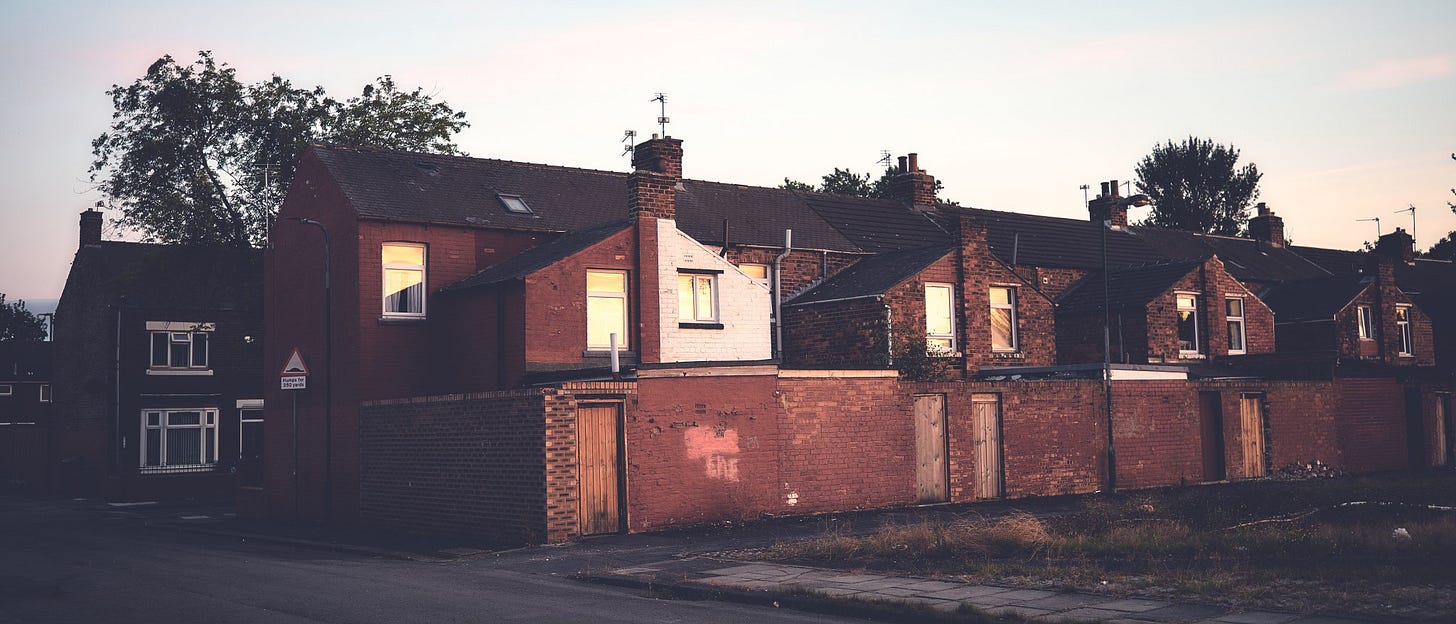
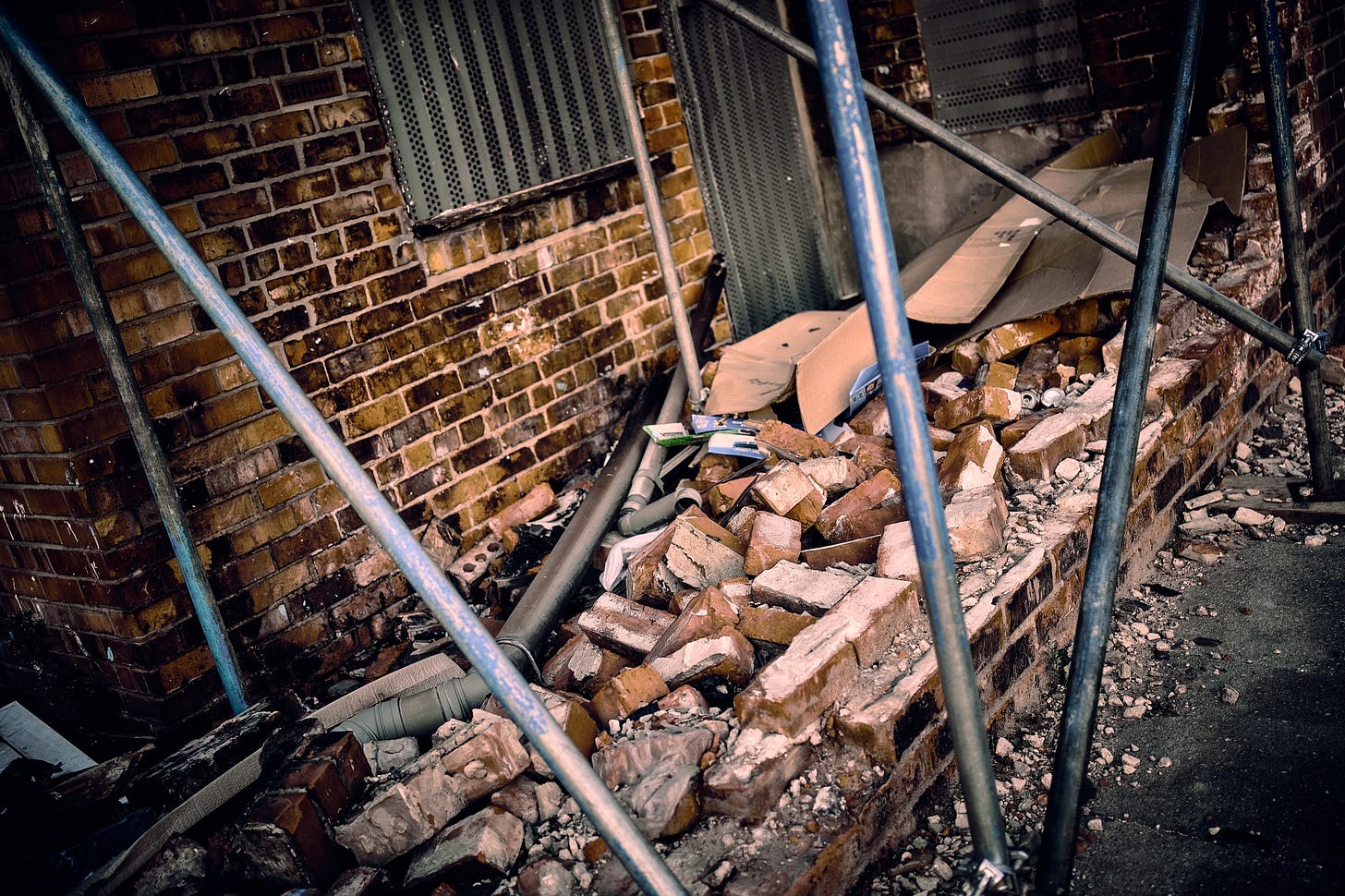
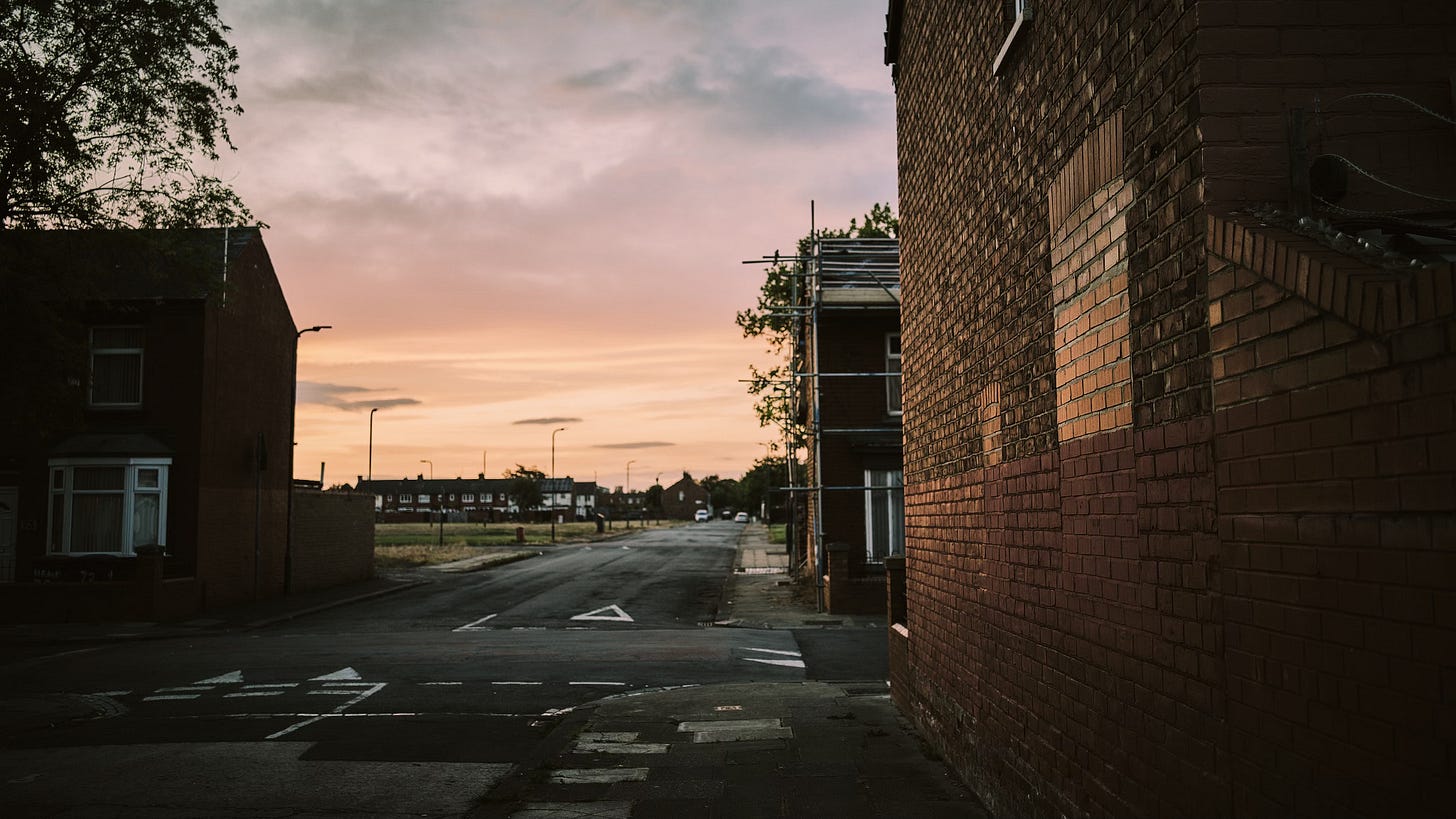
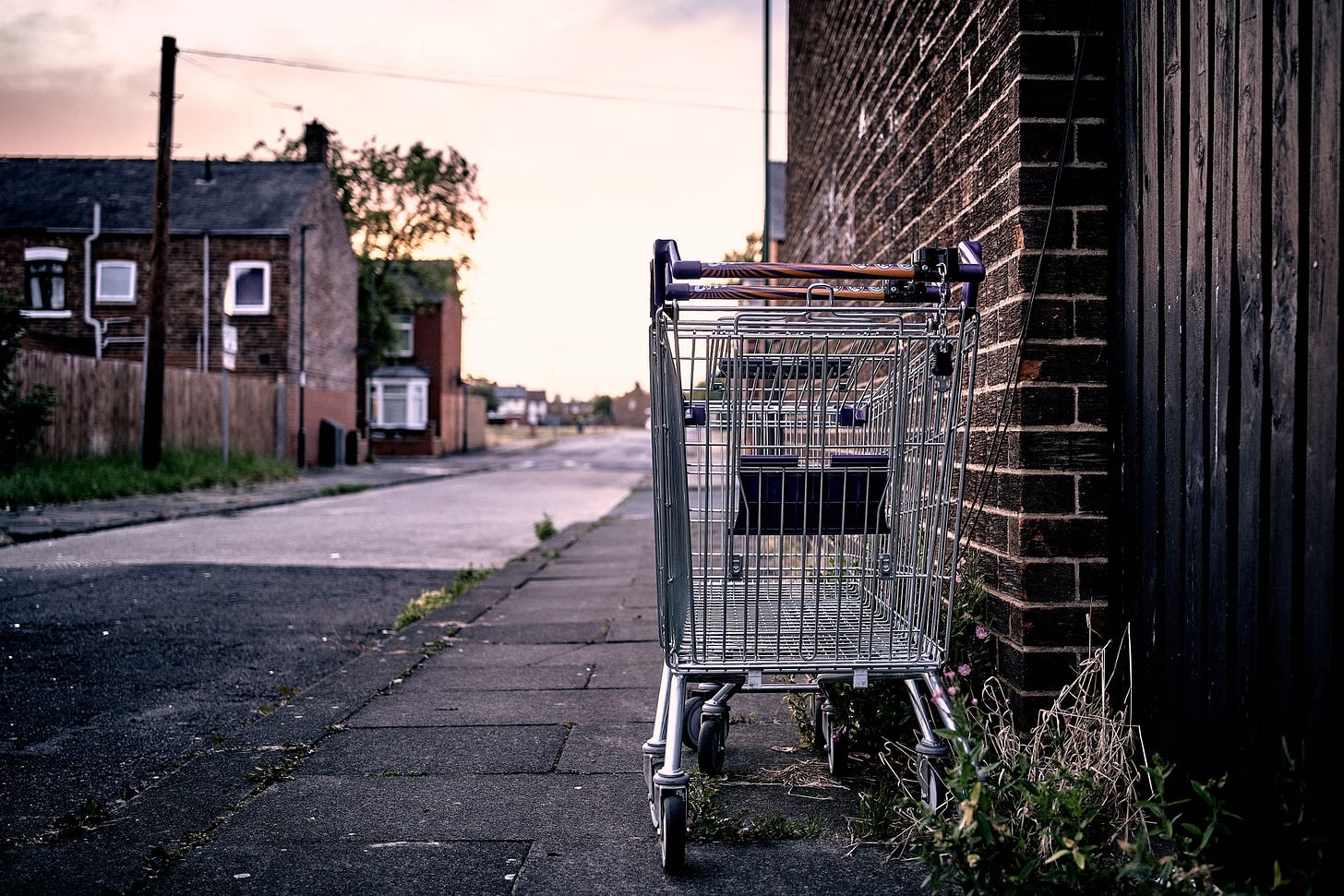
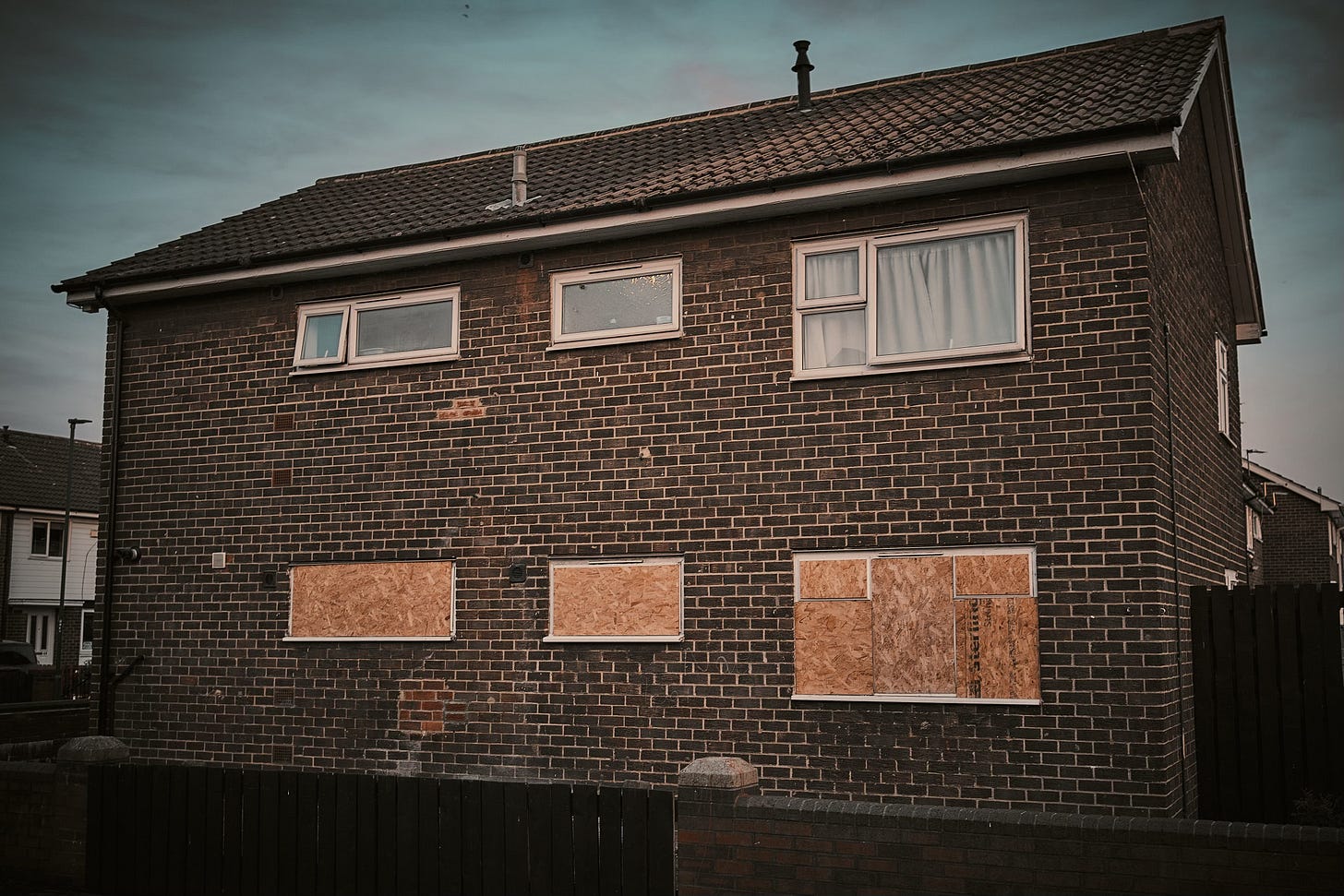
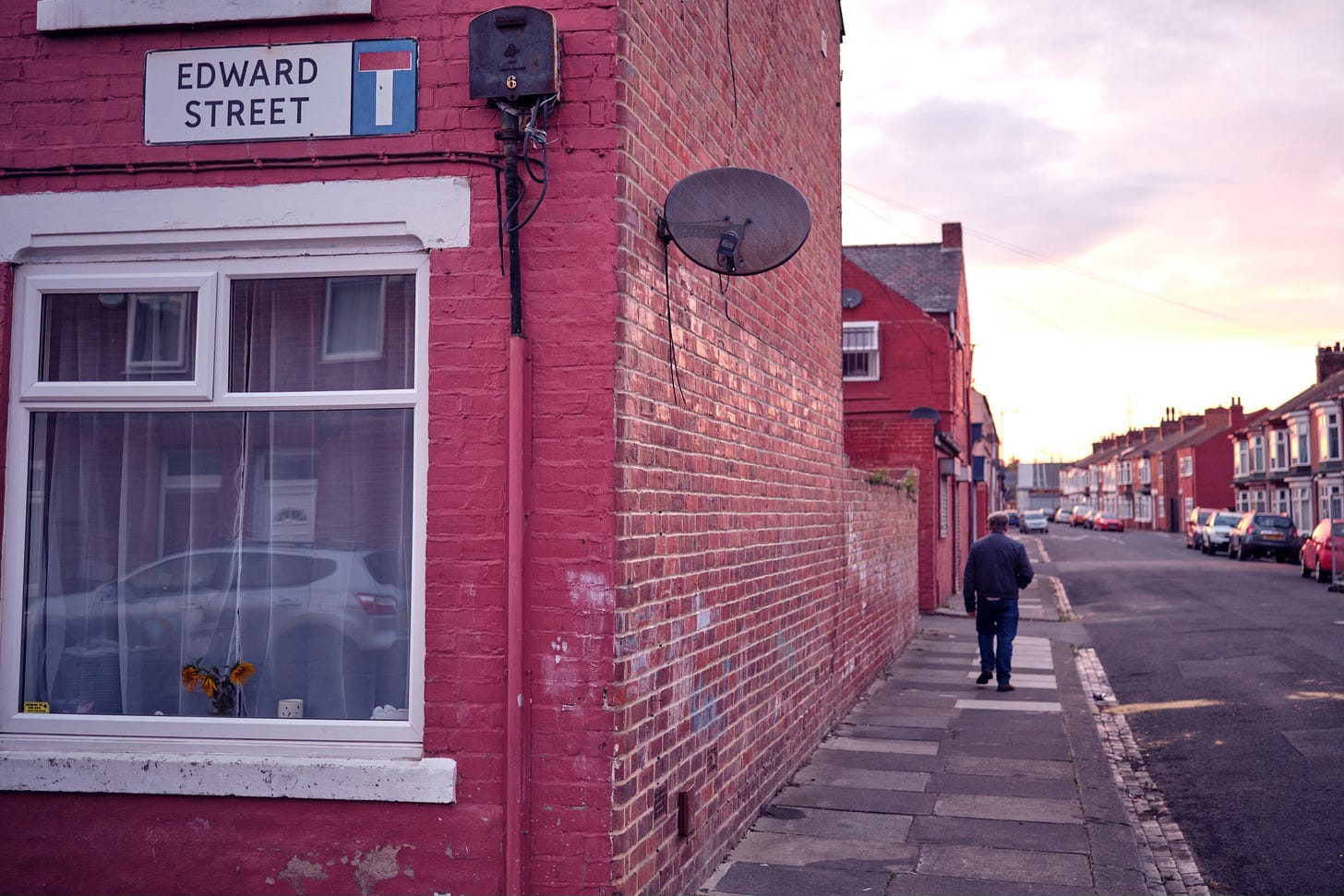
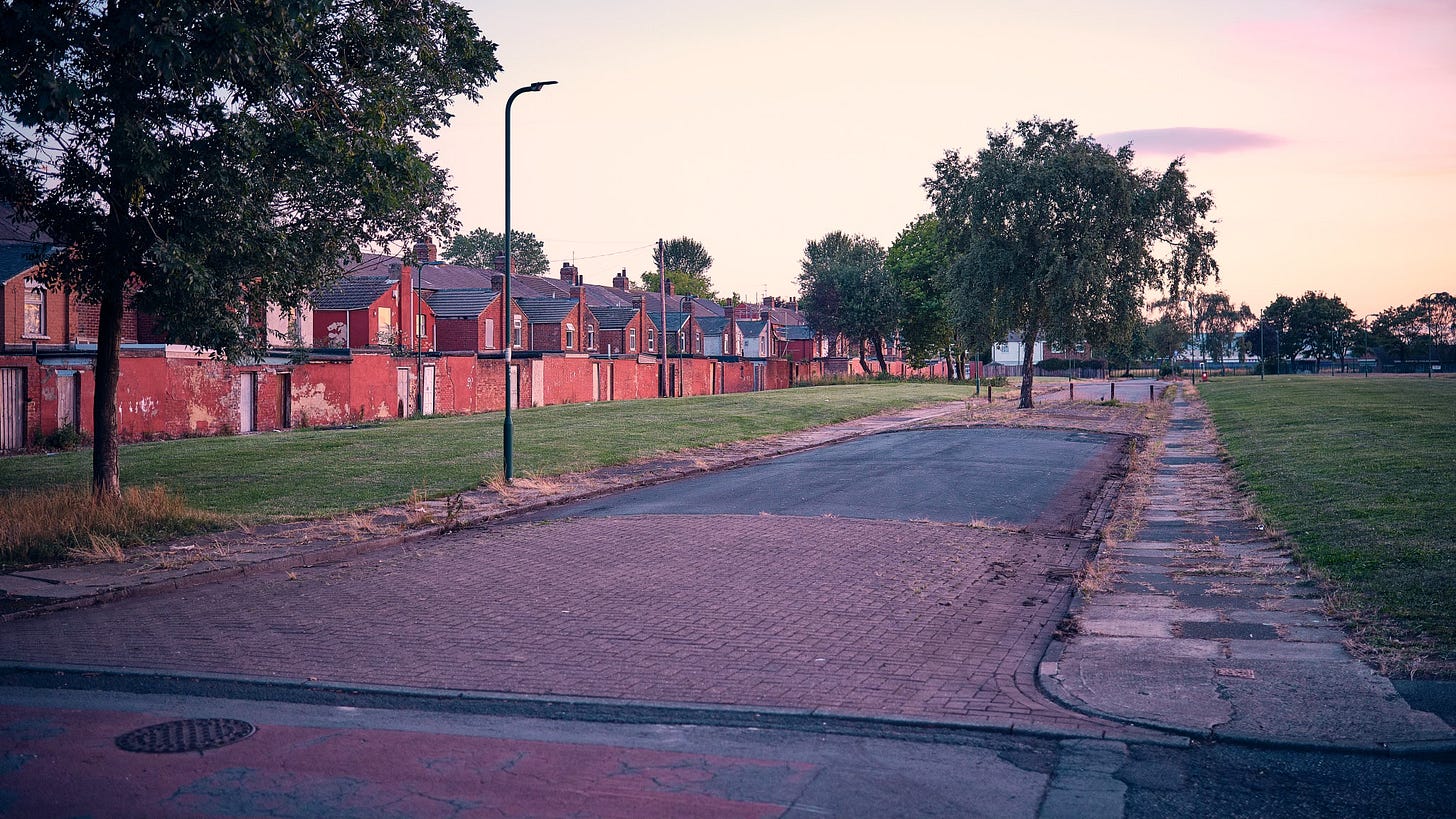
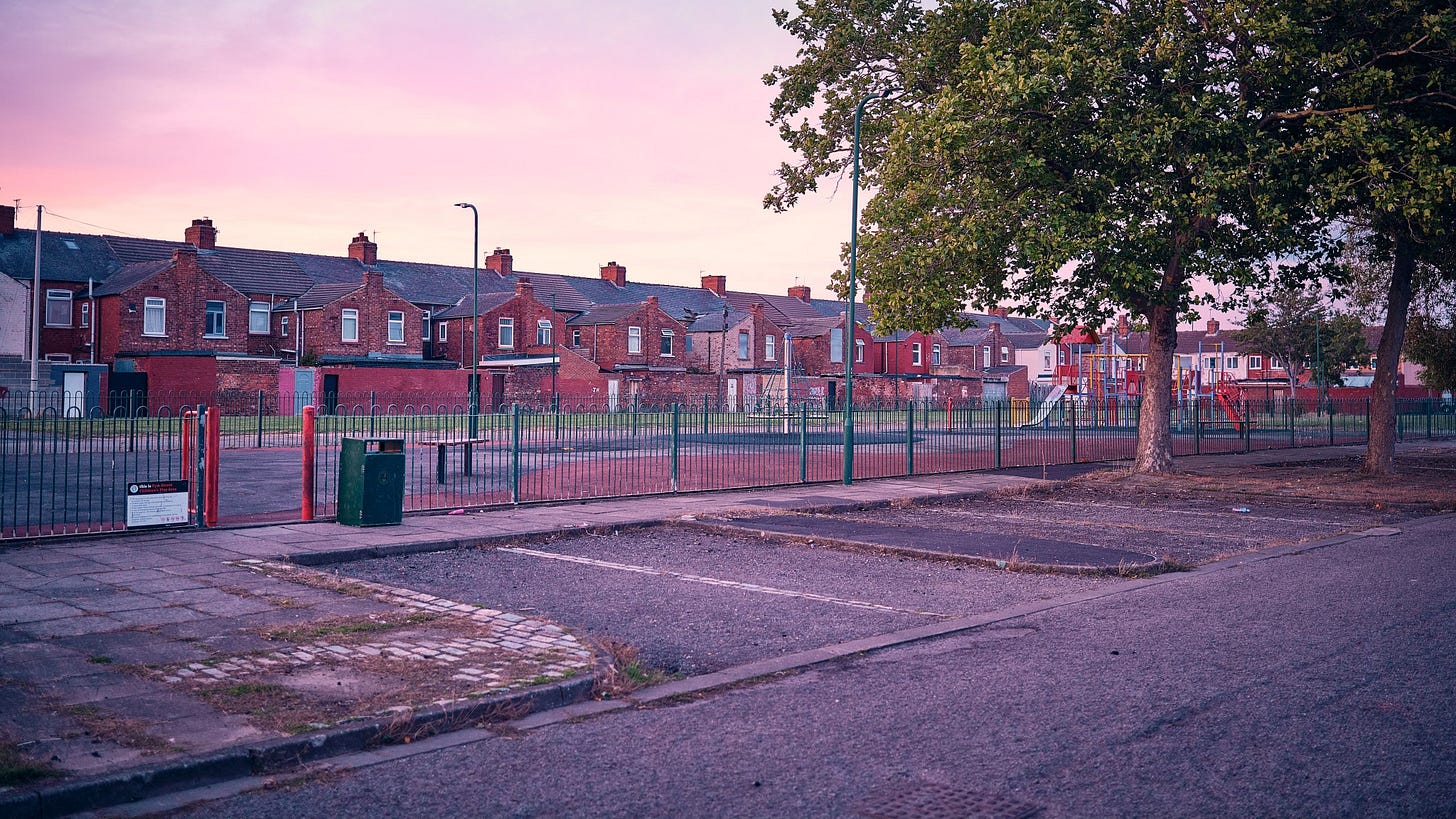
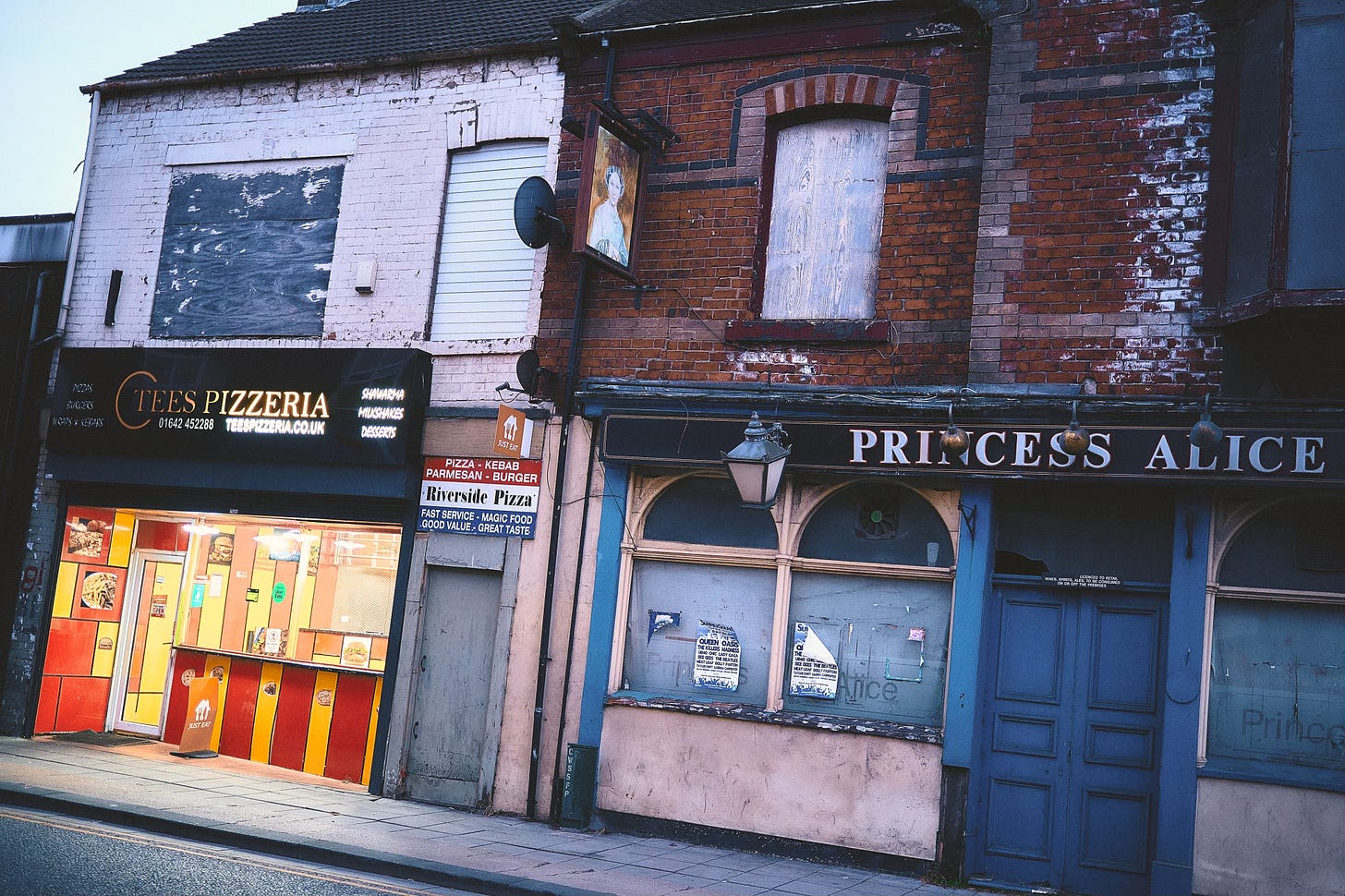
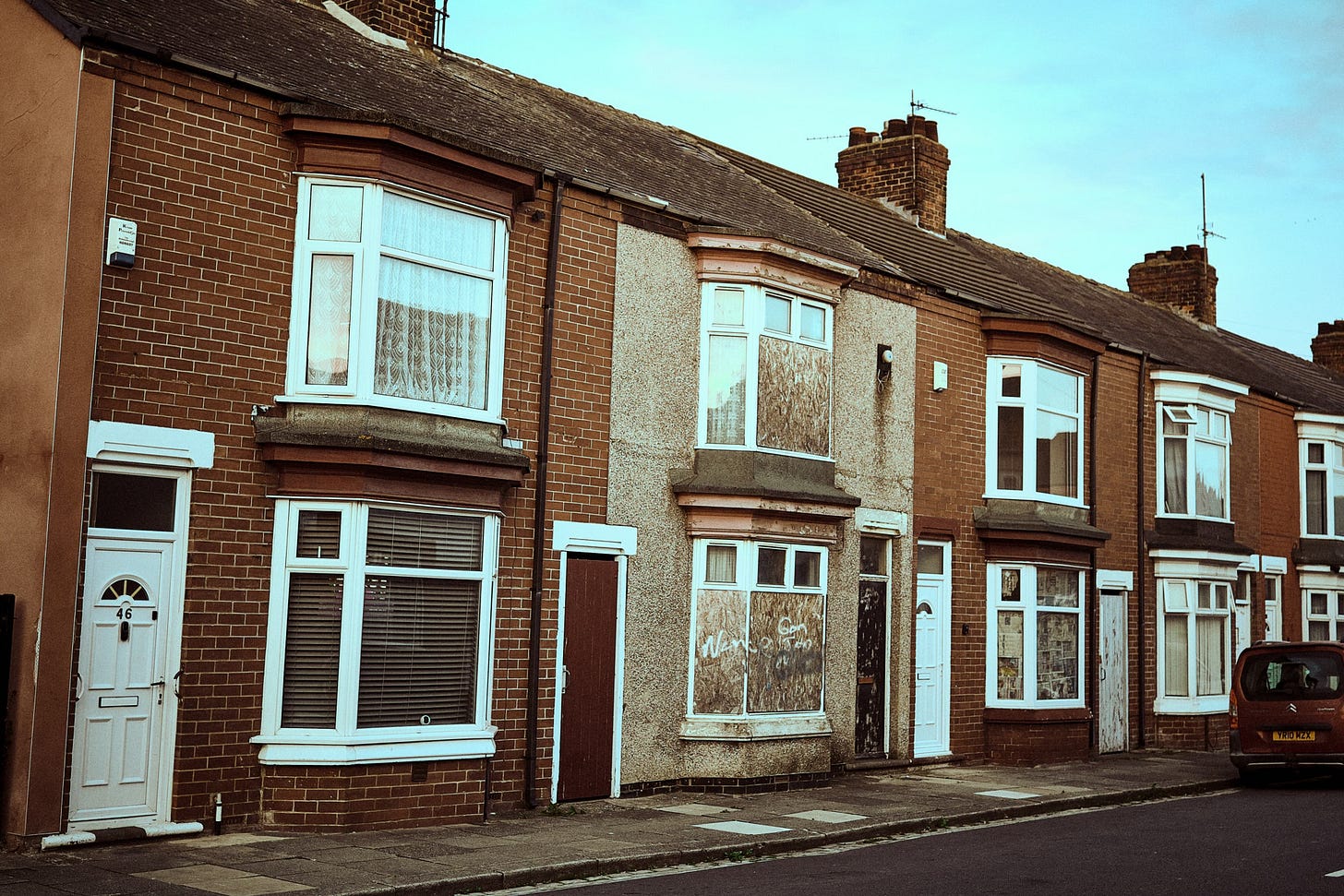
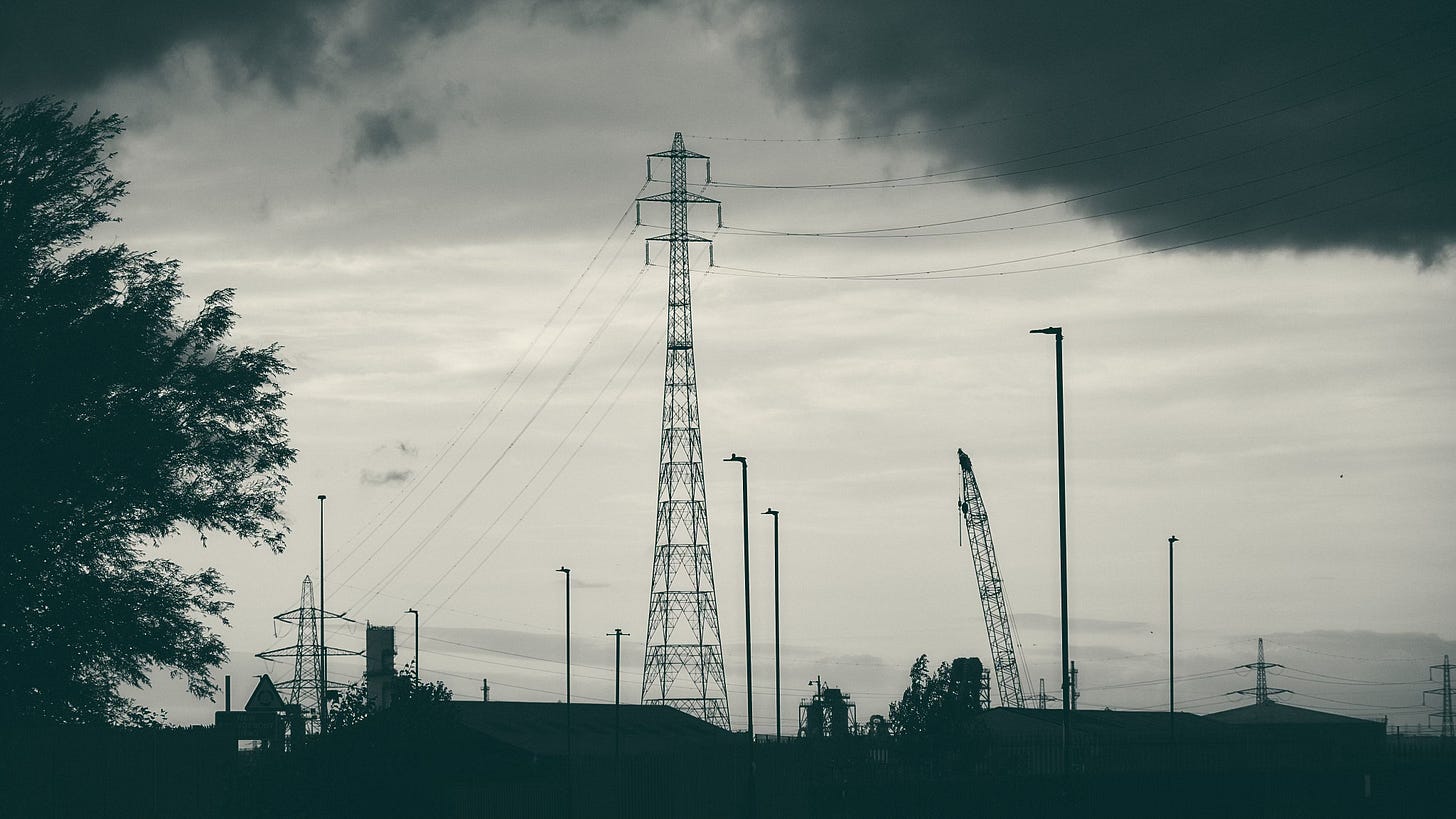
Malignant neglect and deliberate decimation...horrible to see what has been done to God's gift of a "green and pleasant land" !
Your photographic works do show a sad area, depleted of strong youngsters. But, I've always heard that from the ashes spring strong Oaks. There is hope for the future, here.
PS: It is good to see your photographic skills in action - again.
From Louisiana with hope and prayers for your 'legal' works.
bayoucastine